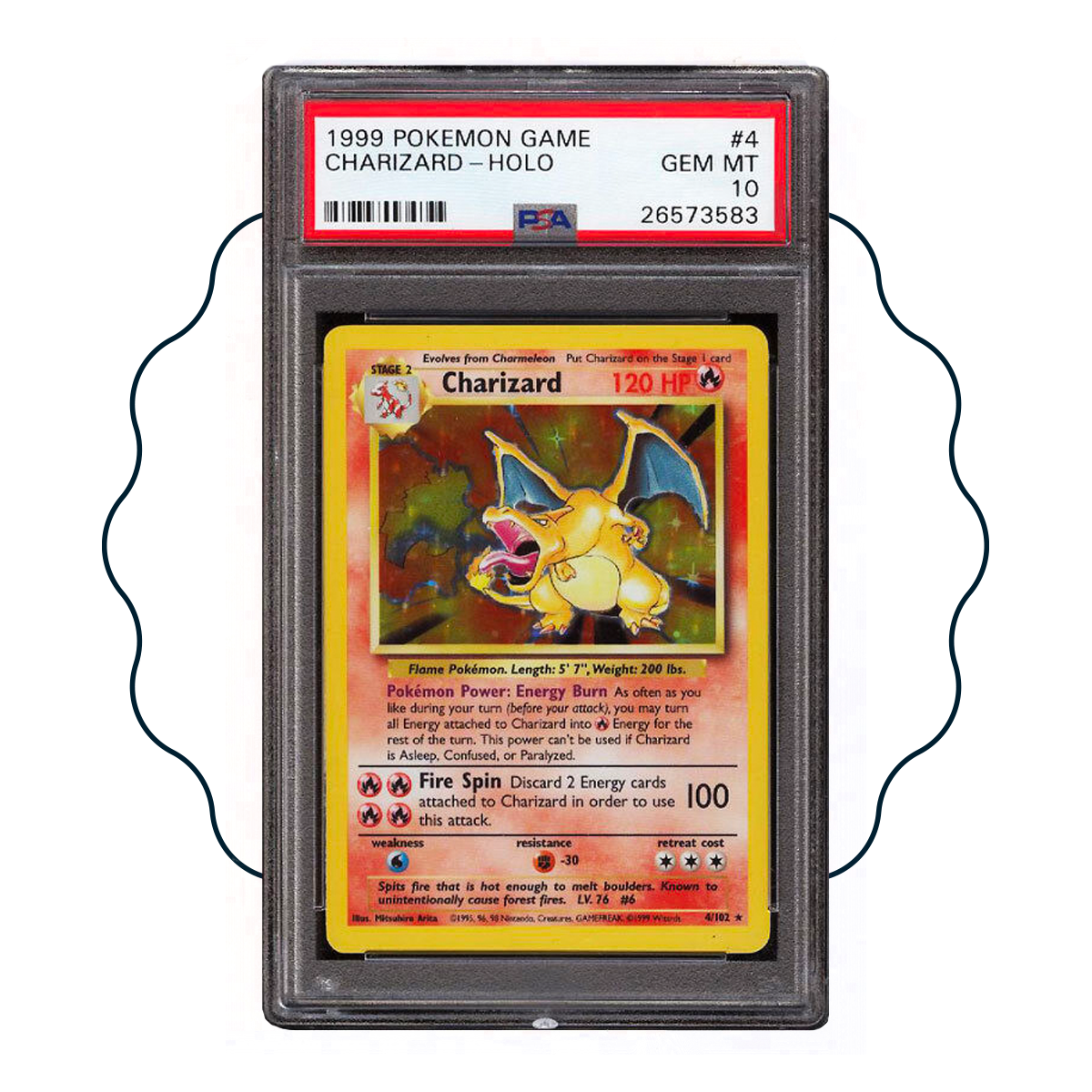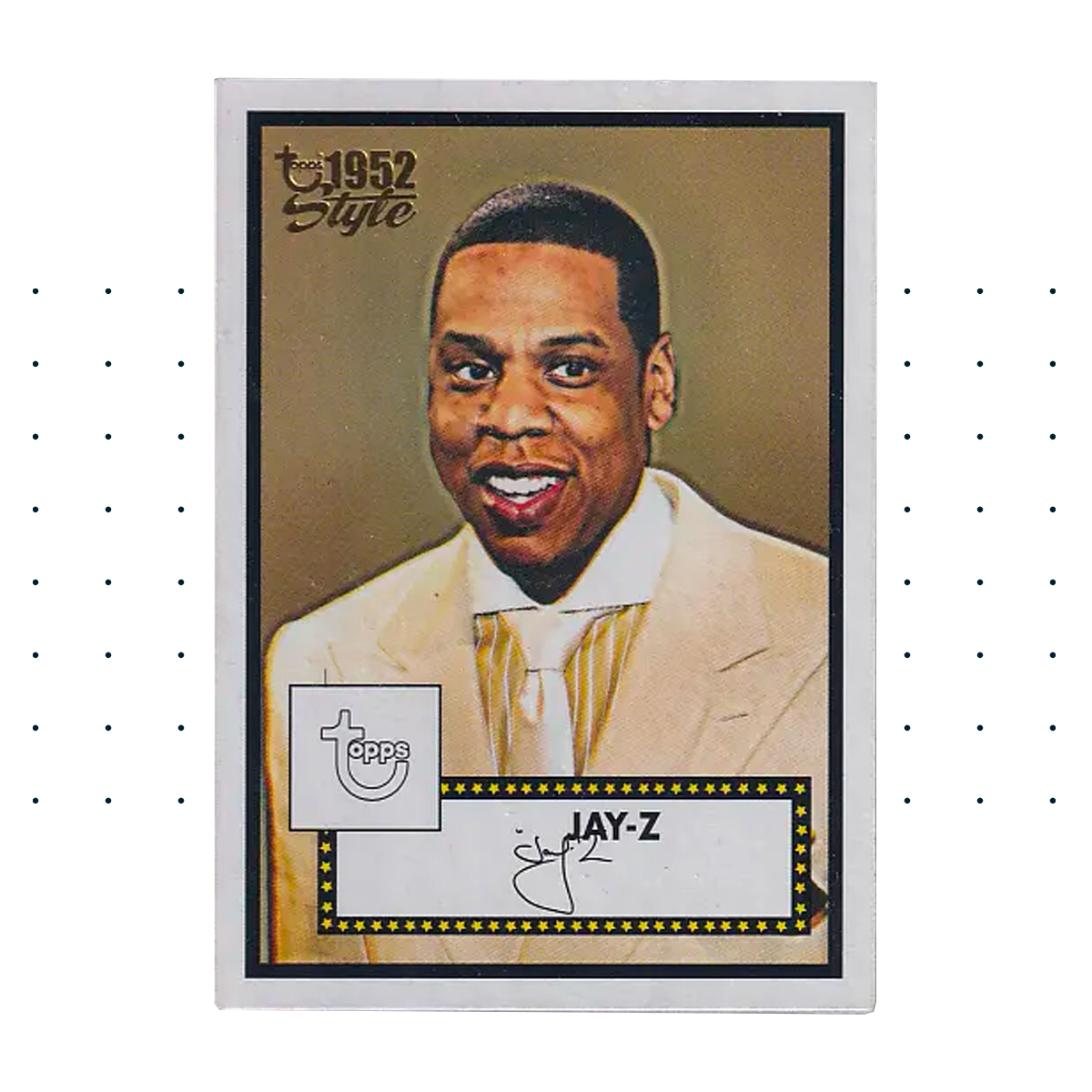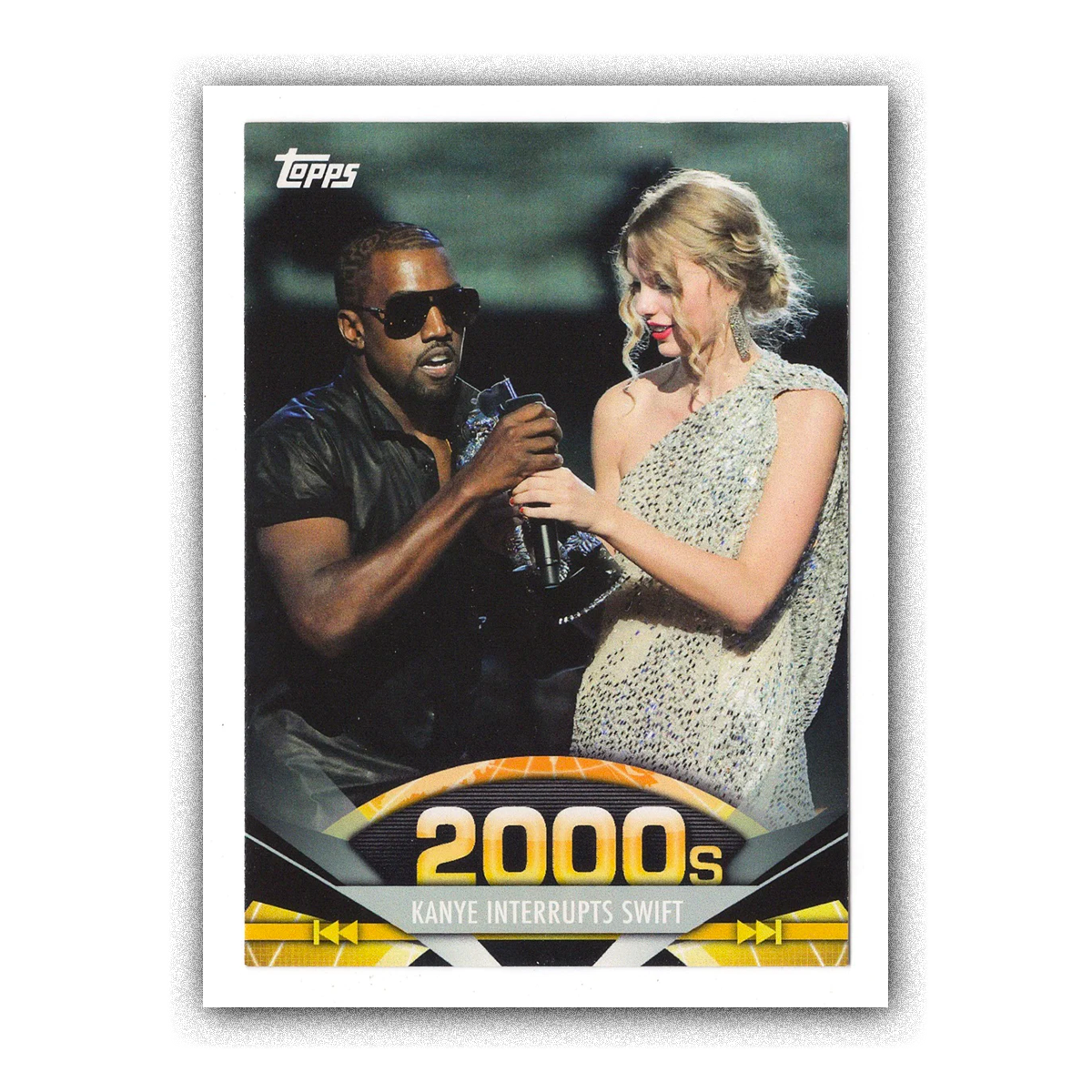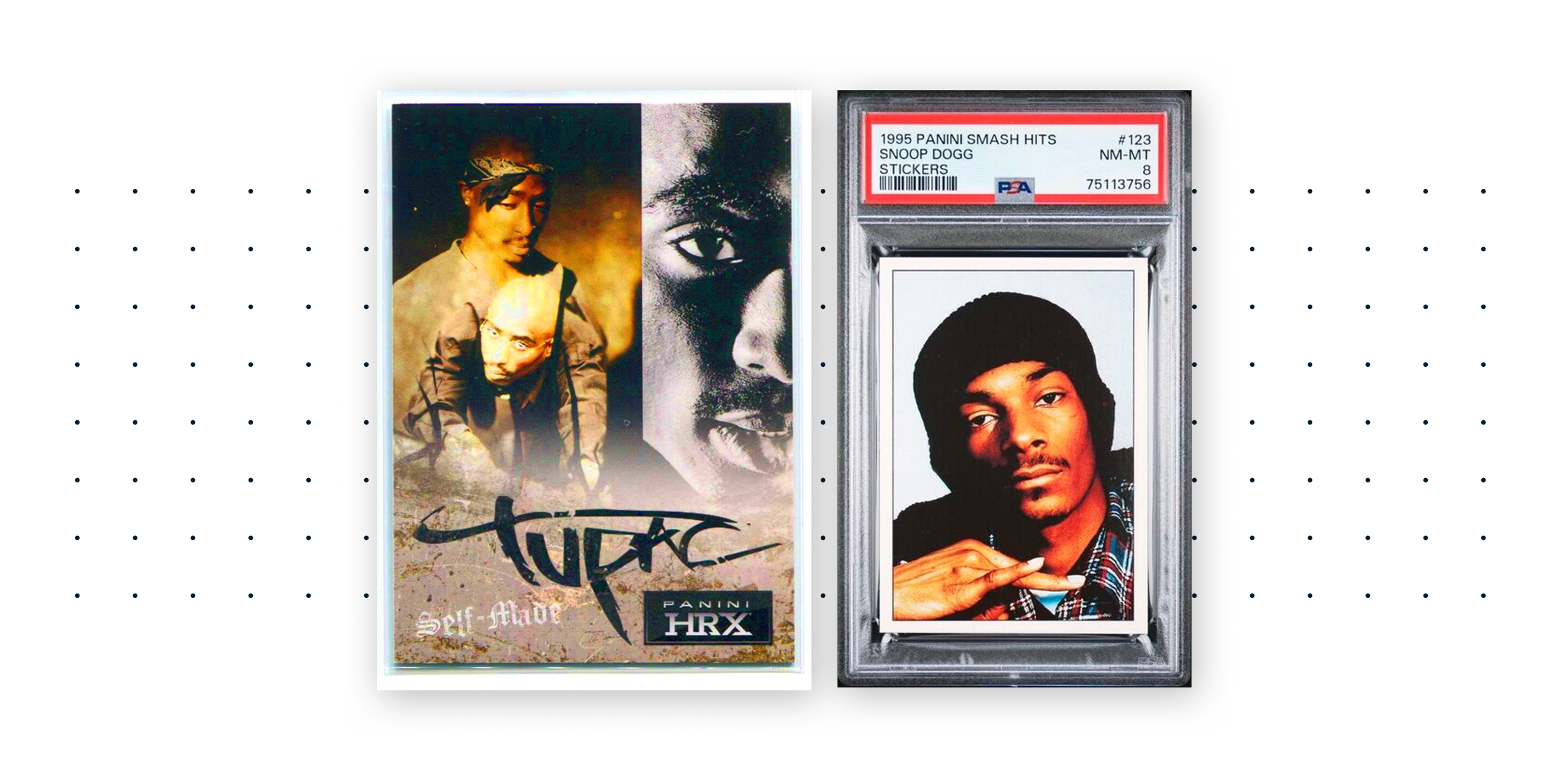

In the latter category?
Trading cards of various superstar musicians.

Let’s take for example one of the more well-known musician “rookie” cards: Jay-Z’s appearance in 2005 Topps Basketball. When GemRate began tracking the population of the set back in April of 2021, there were just 22 PSA-graded copies of Jay-Z’s base card. Today? There are 450. That’s nearly 2000% growth, which makes the 340% growth of the overall set look extremely modest.
22 graded copies will seem like a glut compared to some other “newly” discovered music cards. A little under two years ago, there was just 1 PSA-graded copy each of Nirvana’s and Snopp Dogg’s rookie cards from the 1995 Panini Smash Hits Stickers set. Today, there are 278 and 235 respectively. Given the humble starting point, there’s no need to even compare the growth to other mainstream sports sets from the period.
The story is similar for a fun card from 2011 Topps American Pie, which depicts Taylor Swift and Kanye West in the midst of the infamous VMA speech interruption. “Taylor I’m gonna let you finish…”

At the risk of beating a dead horse, another trio of examples can be found in the 2013 Panini Black Friday HRX set, featuring cards of Notorious B.I.G., Snoop Dogg, and Tupac. Two years ago, the total set population was 10 cards. Today, it’s 357.

What about a Jimi Hendrix “rookie”? The Hendrix entry from 1968 Panini Cantanti has grown in population by 75% over the last two years. Viewed against the 4-5 figure percentage growth of the cards we discussed previously, 75% may not seem like much. But consider the growth of sports sets of that same year over the last 24 months. 1968 Topps Baseball and Football grew in population by just 12% and 8% respectively. Even the premier rookie card of the 1968 baseball set, the Mets Rookies card featuring Jerry Koosman and Nolan Ryan, has only experienced a 20% increase in PSA population over that two-year period.
Bob Marley was included in the 1978 Swedish Samlarsaker set, but only 5 of those cards had been PSA-graded two years ago. Fast forward to August of 2023, and 62 Marleys have found a new plastic home. Sports issue populations from that year have more commonly grown in the low double-digits.

In terms of values, while some of these cards have held their ground in recent years, it won’t be surprising to learn that many of them have followed the path of the broader market, which makes even more sense in light of the sharply rising populations. Over the last 12 months, CardLadder’s Entertainment Index is down just 44%, not dramatically better than the markets for Basketball and Football. Over the last two years though, it’s down just 2%, which compares very favorably to the Basketball Index’s -46% performance. The market for these cards demonstrated some lag before enjoying their moment in the sun and eventually returning to earth, which makes sense given their delayed discovery.
Nonetheless, it’s possible that a sea-change has occurred in the last two years, as collectors took increasing notice of off-field cultural icons and their global appeal. That appeal is no longer exclusive to Elvis or the Beatles. Perhaps cardboard isn’t the best vehicle to express their collecting appeal, or to induce non card-collecting fans to become collectors. Maybe it’s stage-used material, concert posters, or rare concert merch. In any case, it seems we’re just in the “sound check” phase of the collecting pursuit of global music icons.